Triamcinolone isn’t a cure for scars, but for many people with stubborn keloids or raised scars, it’s the most reliable tool they’ve found. If you’ve tried silicone sheets, pressure garments, or over-the-counter creams with little to no results, you’re not alone. Keloids don’t just sit there-they grow, itch, and sometimes hurt. And they don’t care how old the injury was. A cut from five years ago can suddenly become a raised, red, itchy lump that refuses to fade. That’s where triamcinolone comes in.
What Is Triamcinolone?
Triamcinolone acetonide is a synthetic corticosteroid. It’s not new-it’s been used since the 1950s. But unlike oral steroids that affect your whole body, triamcinolone for scars is injected directly into the skin. This means it targets the problem area without flooding your bloodstream with hormones. It works by calming down the overactive healing response that turns a simple wound into a keloid.
When your skin heals, fibroblasts make collagen-the protein that gives skin structure. In normal healing, collagen stops being produced once the wound closes. In keloids, fibroblasts keep going. They overproduce collagen, forming a tumor-like growth that sticks out from the skin. Triamcinolone shuts down that signal. It reduces inflammation, slows collagen production, and softens the scar tissue over time.
How It’s Used for Keloids and Scars
Doctors don’t hand out triamcinolone like candy. It’s given as an injection, usually every 4 to 6 weeks. The typical dose for keloids is 10 mg/mL, injected slowly into the scar using a fine needle. The goal isn’t to make the scar disappear overnight-it’s to flatten it, reduce redness, and stop the itch. Most patients see noticeable improvement after 2 to 4 treatments. Some need up to 6, depending on how big and old the keloid is.
It’s not painful, but it’s not comfortable either. The injection feels like a sharp pinch, followed by a burning sensation that fades in a minute. Afterward, the area might be slightly swollen or bruised. That’s normal. You’re not supposed to rub or scratch the area for 24 hours. Some people report the scar feeling softer and flatter within a week.
Triamcinolone is often combined with other treatments. A 2023 study in the Journal of the American Academy of Dermatology found that combining injections with cryotherapy (freezing the keloid) led to a 78% reduction in scar height after 3 months-much better than either treatment alone. Laser therapy and silicone gel pads are also common partners.
Who Benefits the Most?
Not everyone responds the same way. People with darker skin tones-especially those of African, Asian, or Hispanic descent-are more prone to keloids. For them, triamcinolone is often the first-line treatment after surgery, because keloids have a 50-100% chance of coming back if you just cut them out. Injections reduce that risk dramatically.
It also works well for scars from acne, burns, piercings, and C-sections. If your scar is thick, red, itchy, or growing beyond the original wound edges, triamcinolone is worth considering. But if your scar is flat, pale, and stable-no longer changing-it probably won’t help much. That’s just a healed scar, not a keloid.
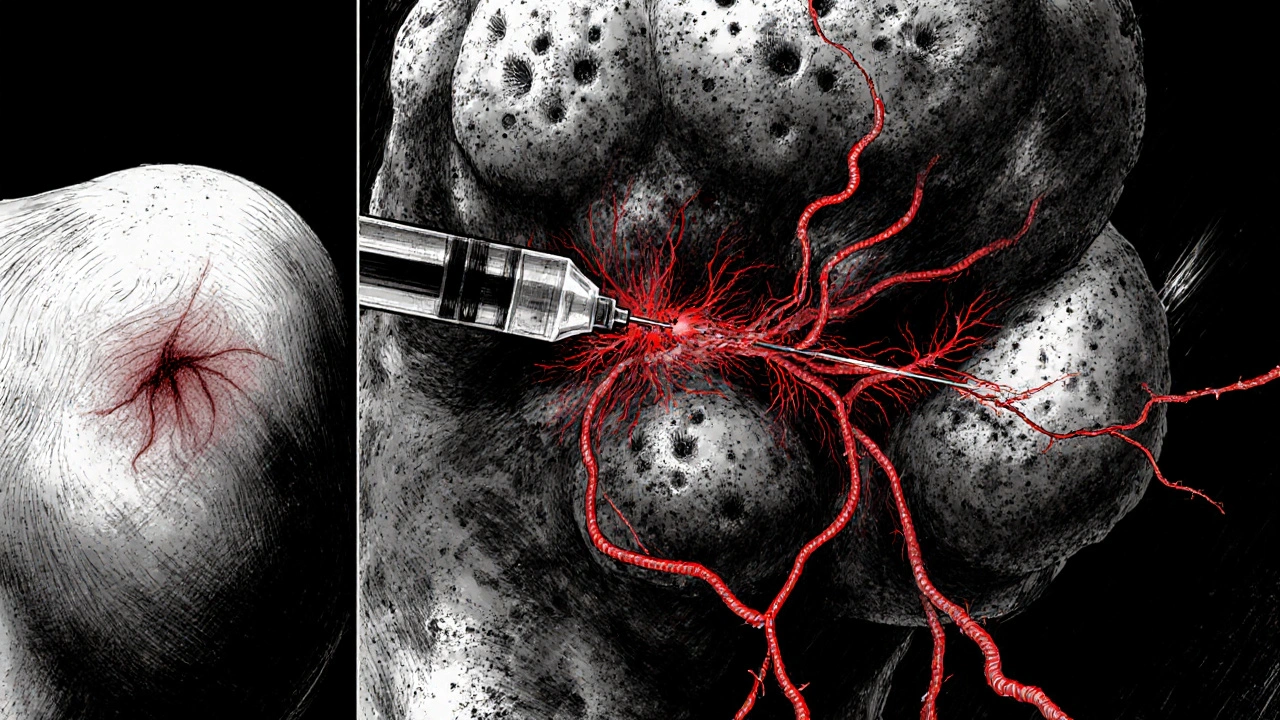
Side Effects and Risks
Triamcinolone is generally safe when used correctly. But because it’s a steroid, there are risks if it’s overused or injected too frequently.
- Skin thinning: The most common side effect. The skin over the injection site can become fragile, shiny, or show tiny blood vessels. This usually reverses after stopping treatment.
- Depigmentation: The skin may lighten around the scar. This is more noticeable in darker skin tones and can be permanent.
- Atrophy: In rare cases, the fat under the skin can shrink, creating a small dent. This is more likely with high doses or repeated injections in the same spot.
- Infection: Rare, but possible if the area isn’t cleaned properly before injection.
There’s no evidence that triamcinolone injections cause systemic side effects like weight gain, mood swings, or high blood sugar when used for scars. The dose is too low and too localized. Still, people with diabetes or weakened immune systems should be monitored more closely.
Alternatives to Triamcinolone
There are other options, but none are as widely used or studied for keloids.
| Treatment | Effectiveness | Frequency | Side Effects |
|---|---|---|---|
| Triamcinolone injections | High (60-80% improvement) | Every 4-6 weeks | Skin thinning, lightening |
| Silicone sheets/gel | Moderate (30-50%) | Daily for 12+ hours | Itching, rash |
| Cryotherapy (liquid nitrogen) | Moderate (40-60%) | Every 3-4 weeks | Pain, blistering, pigment loss |
| Laser therapy (PDL) | Moderate (50-70%) | Every 4-8 weeks | Pain, swelling, temporary darkening |
| Surgery alone | Low (50-100% recurrence) | Single procedure | New scar, worse keloid |
For mild cases, silicone gel is a good first step. It’s cheap, safe, and works for about half of users. But for thick, stubborn keloids, it’s rarely enough on its own. Laser therapy can reduce redness and smooth texture, but doesn’t flatten the scar as well as steroids. Cryotherapy can shrink keloids, but often leaves white spots. Surgery without steroids? That’s asking for trouble.
What to Expect During Treatment
Most clinics start with one injection and wait 6 weeks. If the scar hasn’t softened or shrunk, they’ll give another. If it’s improving, they’ll keep going until it stops changing. The goal isn’t perfection-it’s control. A keloid that’s flat, doesn’t itch, and doesn’t grow is a win.
It’s common to feel discouraged if you don’t see results after one shot. Healing takes time. Think of it like turning off a slow leak in a pipe. You don’t see the water stop immediately. But after a few turns of the valve, the flow slows. Same with triamcinolone.
Keep a photo journal. Take pictures of your scar every month under the same lighting. You won’t notice small changes day to day, but comparing photos from 3 months ago can be eye-opening.
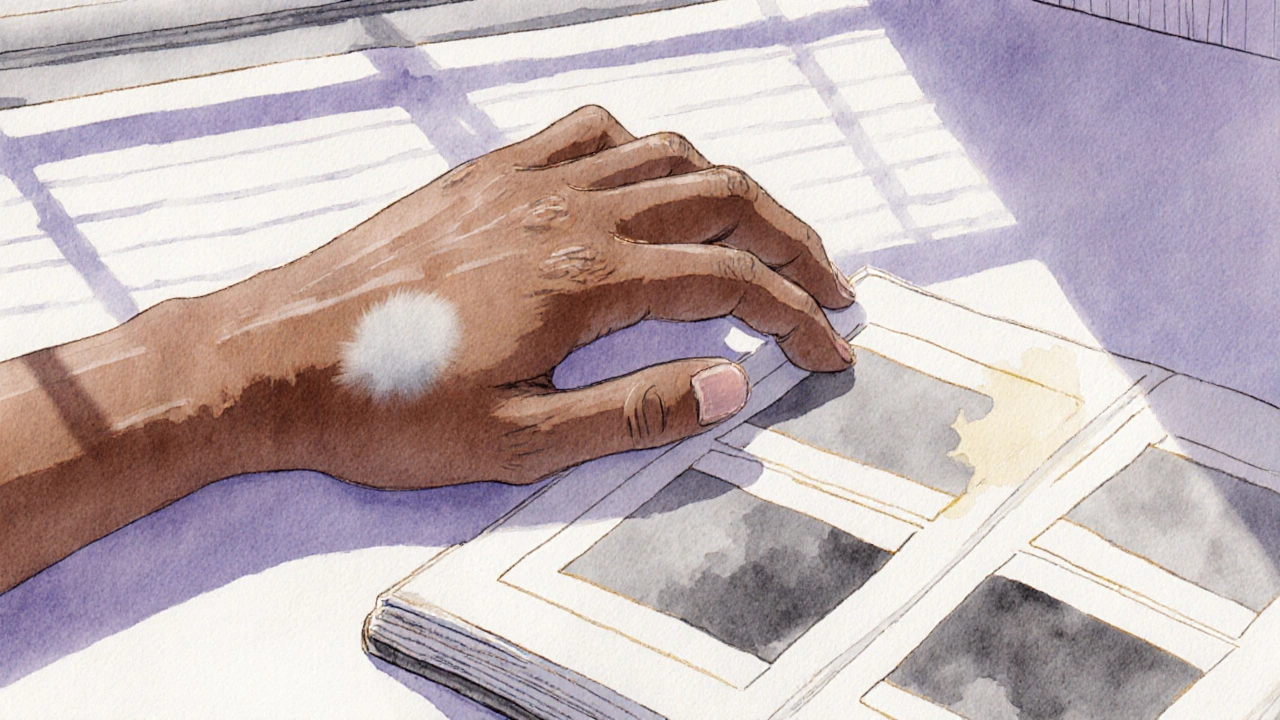
When to Avoid Triamcinolone
It’s not for everyone. Skip it if:
- You have an active skin infection near the scar
- You’re pregnant or breastfeeding (limited safety data)
- Your scar is still fresh-wait at least 6 months after injury
- You’ve had a bad reaction to corticosteroids before
If you’re on immunosuppressants or have a history of tuberculosis, talk to your doctor. They may want to run a skin test first.
Long-Term Results
Studies show that 70% of patients maintain improvement for at least a year after stopping treatment. But keloids can come back. That’s why many doctors recommend maintenance injections every 6 to 12 months-just one or two-to keep things under control.
Some people get lucky and never need another shot. Others need ongoing care. There’s no shame in that. Keloids are a medical condition, not a personal failure. What matters is that you’re managing it.
Final Thoughts
Triamcinolone isn’t magic. It’s not a one-time fix. But it’s one of the few treatments with real, measurable results for keloids. For people who’ve spent years trying everything from coconut oil to laser treatments with no success, it’s often the turning point.
The key is consistency. Don’t skip appointments. Don’t stop too soon. And don’t let fear of side effects stop you from trying. Skin thinning and lightening are rare when done right-and they’re far better than living with a scar that grows and itches every day.
If you’re considering triamcinolone, find a dermatologist who’s done this before. Ask how many keloid patients they treat each month. Experience matters. A skilled injector can get great results with minimal side effects. A rushed one? That’s how you end up with a dent in your skin.
How long does it take for triamcinolone to work on keloids?
Most people start seeing changes after 2 to 4 injections, spaced 4 to 6 weeks apart. Full flattening can take 3 to 6 months. Patience is key-this isn’t a quick fix.
Can triamcinolone remove scars completely?
No, it doesn’t remove scars. It reduces their size, flattens them, and stops them from growing. The goal is to make them less noticeable and less bothersome-not to erase them entirely.
Is triamcinolone safe for dark skin?
Yes, but with caution. People with darker skin are more prone to skin lightening after injections. A lower concentration (5 mg/mL) and fewer injections can reduce this risk. Always work with a dermatologist experienced in treating pigmented skin.
Can I use triamcinolone on a new scar?
No. Wait at least 6 months after the injury. Early scars are still healing. Injecting steroids too soon can interfere with normal healing and make the scar worse.
What’s the success rate for triamcinolone on keloids?
Studies show 60% to 80% of patients experience significant improvement-flattening, reduced redness, and less itching. Success depends on the size, age, and location of the keloid, as well as how consistently you follow the treatment plan.
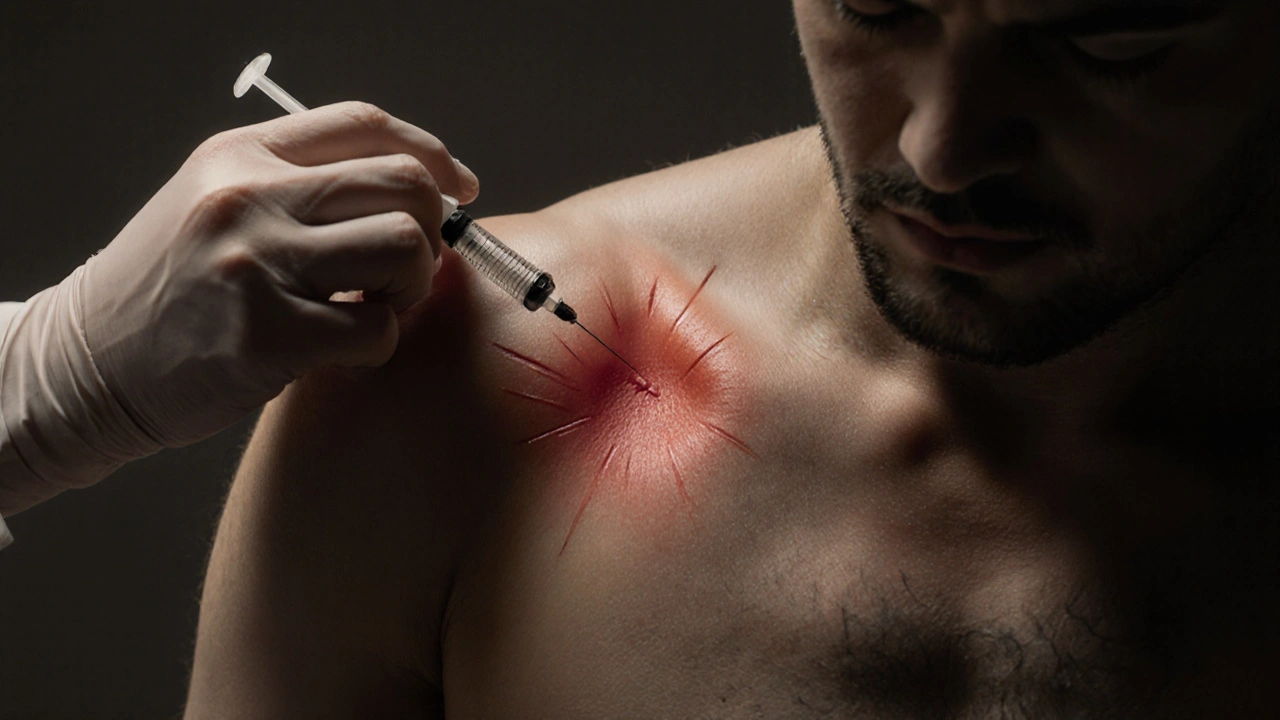
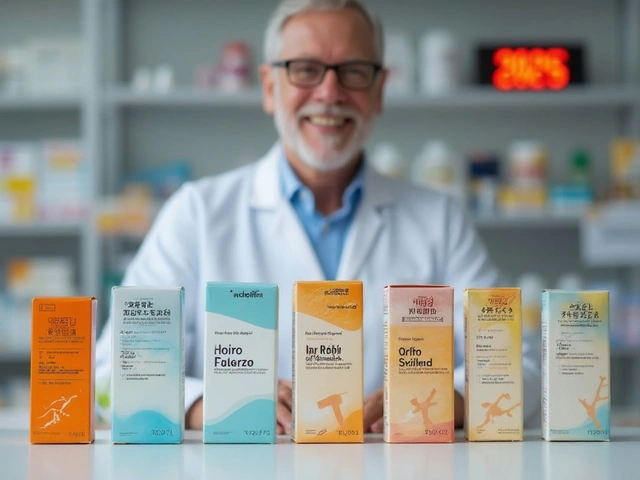

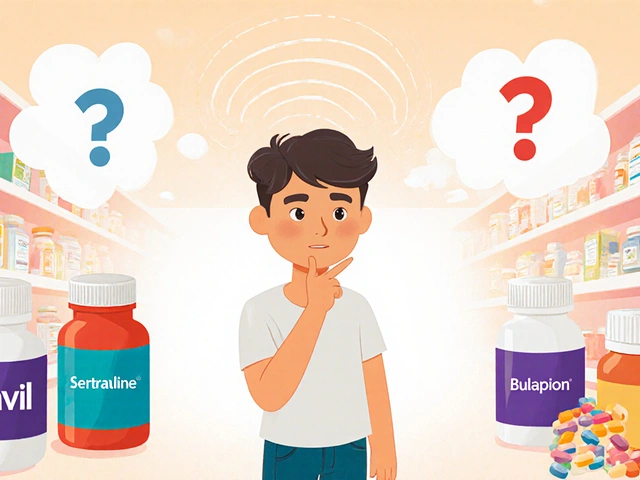
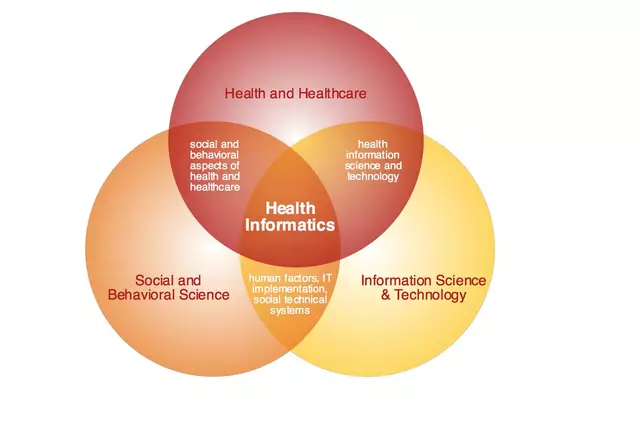
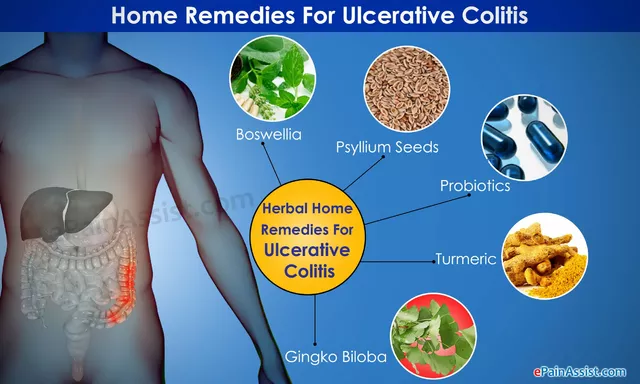
Craig Venn
2 November 2025 - 00:02 AM
Triamcinolone injections are the gold standard for keloids no question
Works by suppressing fibroblast collagen overproduction via glucocorticoid receptor agonism
Most studies show 60-80% reduction in height and symptoms after 3-6 sessions
Combination with cryo or PDL laser boosts efficacy to 75%+ response rates
Key is consistent dosing every 4-6 weeks not skipping sessions
Side effects like atrophy and hypopigmentation are dose dependent not inevitable
Always start low 5-10 mg/mL and titrate based on response
For dark skin tones lower concentration reduces depigmentation risk
Don't confuse keloids with hypertrophic scars they behave differently
Post-injection massage helps distribute the steroid evenly
Document with monthly photos changes are subtle but cumulative
Patience is non-negotiable this isn't a quick fix
Matthew Williams
3 November 2025 - 21:11 PM
Yeah right like some steroid shot is gonna fix what nature made
They just want you hooked on monthly injections so they can keep cashing in
My cousin got one of these and now his skin looks like crepe paper
They don't tell you about the white patches that never come back
It's all big pharma greed wrapped in science jargon
Just leave it alone let your body heal on its own
They're scared of natural remedies because they don't make money off them
Sarah Major
5 November 2025 - 12:08 PM
I tried this after my C-section scar started ballooning out
Two shots in and it stopped itching for the first time in three years
But now I have this pale circle where the injection was
It's worse than the scar honestly
I wish someone had warned me about the discoloration
Now I feel like I traded one problem for another
And don't get me started on the cost
Insurance barely covers it
It's a bandaid on a bullet wound
Why are we still using 1950s treatments for something this complex
There has to be a better way
Kyle Buck
6 November 2025 - 13:25 PM
While the clinical efficacy of intralesional triamcinolone acetonide is well-documented in peer-reviewed literature
the underlying pathophysiological mechanism remains incompletely elucidated
Specifically the molecular cascade involving TGF-beta suppression and collagenase induction requires further longitudinal study
Moreover the heterogeneity in patient response profiles suggests possible genetic polymorphisms in glucocorticoid receptor expression
Future research should prioritize stratified cohorts based on ethnic ancestry and baseline collagen density
Current protocols appear to conflate statistical significance with clinical utility
It is worth noting that the 60-80% improvement metric is often measured subjectively
Objective quantification via dermoscopy or elastography remains underutilized
The ethical implications of long-term steroid exposure in dermatological contexts warrant institutional review
One must also consider the psychological burden of chronic scar management
This is not merely a medical issue but a sociocultural phenomenon
Idolla Leboeuf
8 November 2025 - 10:42 AM
Y'all are overcomplicating this
I got keloids from ear piercings
Three shots and now I can wear earrings again
Yes my skin got a little thin
So what
It's better than living with something that looks like a tumor
Don't let fear stop you from taking back your body
You deserve to feel comfortable in your skin
Trust me I've been there
Halona Patrick Shaw
10 November 2025 - 06:09 AM
My mom got these injections after her burn scar started growing
She cried after the first one
Not from pain
From relief
For the first time in 15 years she didn't feel like she had to hide her arm
Now she wears tank tops in summer
That's the real win
Not the stats
Not the side effects
Just being able to walk down the street without covering up
That's worth a little skin thinning
Elizabeth Nikole
10 November 2025 - 16:06 PM
Of course it works
It's a steroid
They're all just suppressing symptoms
What about the root cause
Why are so many of us developing keloids now
Is it the processed food
The stress
The toxins in our water
Or is it just that we're all being manipulated into medical dependency
I stopped the shots
Started eating raw
And my scar hasn't grown since
Who needs Big Pharma
My body knows what to do
LeAnn Raschke
12 November 2025 - 07:11 AM
I'm not a doctor but I've read a lot
Triamcinolone isn't perfect but it's helped so many people
If you're scared of side effects talk to your dermatologist
They can adjust the dose
Maybe start with less
And if you're worried about cost ask about patient assistance programs
Most clinics have them
You're not alone in this
There are people who care and want to help
Don't give up
Suresh Patil
12 November 2025 - 13:36 PM
In India we've been using this for decades
It's cheap
It works
Yes there are side effects
But what's the alternative
Living with a scar that grows bigger every year
My sister had one on her chest after surgery
After three injections it became flat
She can wear a blouse now
That's dignity
And yes the skin got lighter
But she says it's worth it
Not everyone agrees
But we don't have the luxury of waiting for perfect solutions
Ram Babu S
13 November 2025 - 20:04 PM
I've seen this work
My uncle got it after a motorcycle accident scar turned into a keloid
He was skeptical
But after four shots
He could finally touch his own skin without flinching
That's more than most treatments can say
It's not magic
But it's real
And sometimes real is enough
Adorable William
14 November 2025 - 08:04 AM
Let me guess
You all think this is the answer
But you're missing the bigger picture
Triamcinolone is just the tip of the iceberg
Who funds these studies
Big pharma
Who controls the guidelines
Big pharma
Who gets paid for each injection
Big pharma
And you think this is medicine
It's a business model
They're not curing you
They're monetizing your trauma
Next they'll be charging you to breathe normally
Dave Collins
14 November 2025 - 12:08 PM
Oh wow
So we're supposed to be impressed by a 1950s steroid injection
That's cutting edge
Next you'll tell me penicillin is the future of antibiotics
How about we try actual science
Like gene therapy
Or CRISPR
Not just dumping steroids into skin like it's a magic potion
Pathetic
Danny Pohflepp
15 November 2025 - 00:52 AM
There's a pattern here
Every time someone mentions triamcinolone
Someone else brings up side effects
But no one asks why
Why do keloids form
Why are they more common in certain populations
Why do some people respond and others don't
Why is this treatment still the standard
Why aren't we investing in real solutions
Why are we accepting mediocrity
Because the system doesn't want you healed
It wants you compliant
And scared
And dependent